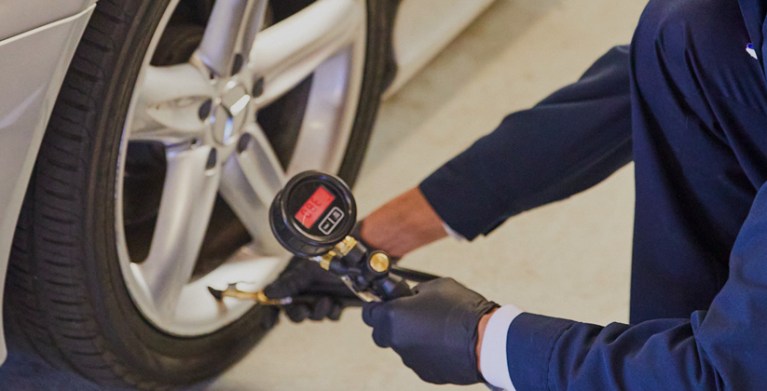Tire Tracks Morris IL: Quality Tires and Providers
Tire Tracks Morris IL: Quality Tires and Providers
Blog Article
Tire Fixing Myths Debunked: Separating Fact From Fiction
In the world of automobile upkeep, tire repair work holds a significant place, yet it is usually shrouded in misconceptions and mistaken beliefs that can lead to confusion for lorry proprietors (morris tire service). From the mistaken beliefs surrounding patching versus connecting a punctured tire to the effectiveness of numerous tire sealants, there are numerous key locations where clarity is needed to make educated choices.
Typical Tire Repair Work Misconceptions
Eliminating widespread misunderstandings bordering tire fixing is essential for preserving roadway safety and security and expanding the longevity of your vehicle's tires. It is vital to recognize that not all slits are created equal; while some may indeed need a tire replacement, the majority can be securely fixed.
An additional misconception is the idea that a DIY tire repair work set is an adequate option for all tire problems. While these packages can be useful for short-term fixes in emergencies, they are not a permanent remedy and may not attend to the underlying issue (morris tire service). Seeking the competence of a certified tire specialist is constantly recommended to ensure the safety and honesty of the tire

Can You Repair a Punctured Tire?
Repairing a pierced tire is a common practice in the vehicle market, typically carried out by expert service technicians adhering to certain guidelines and standards. Slits found on the tread location of the tire are usually repairable as long as they are within a specific dimension limit and do not impact the tire's structural stability.
It is important to keep in mind that punctures near the sidewall or shoulder of the tire are normally not repairable as a result of safety and security issues. Such areas go through significant stress and flexing, making fixings unreliable and possibly hazardous. Additionally, if the puncture is also big, surpassing the recommended repairable dimension, or if the tire shows indicators of internal damages, it is more secure to change the tire altogether.
The Truth About Patching Vs. Connecting
When considering the repair of a pierced tire, understanding the distinctions between patching and connecting is crucial for making informed choices concerning tire maintenance and safety. Patching includes repairing the tire from the within, where a spot is put on cover the leak. This method tire tracks morris il is taken into consideration more reputable and lasting as it attends to the damage inside, reducing the danger of air leak and additional tire damages. On the other hand, connecting is a quick repair that involves putting a rubber connect into the punctured location from the exterior. While plugging is convenient and can be done without getting rid of the tire from the rim, it is usually taken into consideration a short-lived solution and may not supply the same level of durability as a patch.
Myth: All Tire Sealers Are Reliable

When selecting a tire sealer, consider elements such as the dimension of leaks it can properly repair, compatibility with tire stress monitoring systems (TPMS), and whether it is secure for the tire product. Remember, while tire sealers can be advantageous in emergency situations, they are not an alternative for correct tire care and upkeep.
Finest Practices for Handling Flat Tires
Because of the varying performance of tire sealants, comprehending best practices for handling blowouts is crucial for maintaining roadway security and automobile performance. When experiencing a level tire, the first action is to safely draw over to the side of the roadway, away from oncoming website traffic. Activate risk lights to inform various other motorists of your situation. It is recommended to use the emergency brake and location wheel wedges under the tires to stop the automobile from rolling. Next off, consult your automobile's manual to find the spare tire, jack, and lug wrench. Before attempting to transform the tire, ensure that the location is level and secure. Loosen the lug nuts, raise the automobile with the jack, eliminate the lug nuts and level tire, and change it with the spare tire. Tighten the lug nuts in a star pattern, lower the automobile, and securely tighten the lug nuts. Stow away the flat tire, tools, and tools, and remember to examine the extra tire's stress periodically. Following these best practices can help you handle flat tires properly and safely.
Conclusion
In final thought, it is very important to different fact from fiction when it pertains to tire repair service misconceptions. Recognizing the fact concerning covering vs. plugging, the effectiveness of tire sealers, and ideal practices for taking care of blowouts can assist make sure the safety and longevity of your tires. By exposing common misconceptions and complying with proper repair work standards, you can make enlightened decisions when it comes to maintaining the health and wellness of your automobile's tires.
Report this page